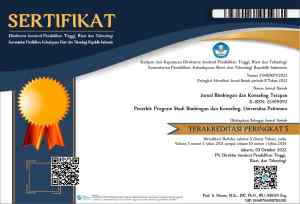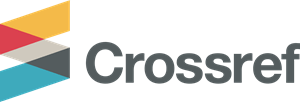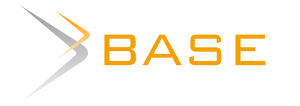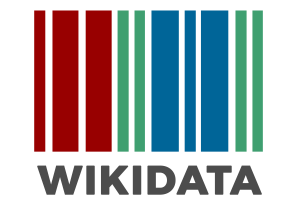Kesiapan Belajar Siswa SMP Negeri 21 Kerinci
Abstract
Keywords
Full Text:
PDFReferences
Alizamar, A., Suri, G. D., Mudjiran, M., Syahniar, S., & Afdal, A. (2018). Learning Skills Level on the Young Prisoners. Couns-Edu: International Journal of Counseling and Education, 3(3), 86–92.
Aljundi, R., Babiloni, F., Elhoseiny, M., Rohrbach, M., & Tuytelaars, T. (2018). Memory Aware Synapses: Learning what (not) to Forget. Proceedings of the European Conference on Computer Vision (ECCV), 139–154.
Atkins, M. S., Hoagwood, K. E., Kutash, K., & Seidman, E. (2010). Toward the Integration of Education and Mental Health in Schools. Administration and Policy in Mental Health and Mental Health Services Research, 37, 40–47. https://doi.org/10.1007/s10488-010-0299-7
Budiarjo, L. (2007). Keterampilan Belajar. Yogyakarta: Andi.
Chen, L. H. (2011). Enhancement of Student Learning Performance Using Personalized Diagnosis and Remedial Learning System. Computers & Education, 56(1), 289–299. https://doi.org/10.1016/j.compedu.2010.07.015
Cooley, L. (2010). The Power of Groups: Solution-Focused Group Counseling in Schools. Thousand Oaks: Corwin Press.
Dodson, T. (2009). Advocacy and Impact: A Comparison of Administrators’ Perceptions of the High School Counselor Role. Professional School Counseling, 12(6), 480–487.
Dugger, S. M., & Boshoven, J. B. (2010). Secondary and Postsecondary Educational Planning. In B. T. Erford (Ed.), Professional school counseling: A Handbook of Theories, Programs & Practices (2nd ed, pp. 274–294). Austin: PRO-ED.
Epstein, J. L., & van Voorhis, F. L. (2010). School Counselors’ Roles in Developing Partnerships with Families and Communities for Student Success. Professional School Counseling, 14(1), 1–14.
Fikriyanda, F., Daharnis, D., & Yuca, V. (2019). The Profile of Students Activities: Before, During and After Learning. International Journal of Research in Counseling and Education, 3(1), 49–54. https://doi.org/10.24036/0077za0002
Gagne, R. (1985). The Conditions of Learning (4th ed.). New York: Holt, Rinehart & Winston.
Ginting, C. (1997). Kiat Sukses di Perguruan Tinggi. Bandung: Penerbit ITB.
Gray, J. (2000). Anak-anak Berasal dari Surga: Cara Membesarkan Anak Secara Positif untuk Membuat Anak Menjadi Kooperatif, Percaya Diri, dan Mengerti Perasaan Orang Lain (Terjemahan oleh Dicky Soetadi). Jakarta: Gramedia Pustaka Utama.
Hilferty, F., Redmond, G., & Katz, I. (2010). The Implications of Poverty on Children’s Readiness to Learn. Australasian Journal of Early Childhood, 35(4), 63–71.
Huber, M., Knottnerus, J. A., Green, L., van der Horst, H., Jadad, A. R., Kromhout, D., … van der Meer, J. W. M. (2011). How Should We Define Health? Bmj, 343, 1–3.
Kok, B. E., Coffey, K. A., Cohn, M. A., Catalino, L. I., Vacharkulksemsuk, T., Algoe, S. B., … Fredrickson, B. L. (2013). How Positive Emotions Build Physical Health: Perceived Positive Social Connections Account for the Upward Spiral Between Positive Emotions and Vagal Tone. Psychological Science, 24(7), 1123–1132. https://doi.org/10.1177/0956797612470827
Kolb, D. A. (2014). Experiential Learning: Experience as the Source of Learning and Development. New Jersey: Pearson.
Maddox, N., Forte, M., & Boozer, R. (2014). Learning Readiness: An Underappreciated Yet Vital Dimension in Experiential Learning. Proceedings of Annual ABSEL Conference, 272–278.
Mandar, S., Syahniar, S., & Syukur, Y. (2017). Kesiapan Siswa yang ditinggalkan Orangtua dalam Menghadapi Ujian. Konselor, 6(1), 24–28. https://doi.org/10.24036/02017611641-0-00
Martin, I., & Carey, J. C. (2012). Evaluation Capacity Within State-Level School Counseling Programs: A Cross-Case Analysis. Professional School Counseling, 15(3), 132–143.
Mcmahon, H. G., Mason, E. C. M., & Paisley, P. O. (2009). School Counselors as Educational Leaders Promoting Systemic Change. Professional School Counseling, 13(2), 116–124.
Mulyani, D. (2013). Hubungan Kesiapan Belajar Siswa dengan Prestasi Belajar. Konselor, 2(1), 27–31.
Nasution, S. (2013). Berbagai Pendekatan dalam Proses Belajar dan Mengajar. Jakarta: Bina Aksara.
Novrialdy, E. (2019). Kecanduan Game Online pada Remaja: Dampak dan Pencegahannya. Buletin Psikologi, 27(2), 148–158. https://doi.org/10.22146/buletinpsikologi.47402
Novrialdy, E., Nirwana, H., & Ahmad, R. (2019). High School Students Understanding of the Risks of Online Game Addiction. Journal of Educational and Learning Studies, 2(2), 113–119.
Prayitno, P. (2012). Jenis Layanan dan Kegiatan Pendukung Konseling. Padang: Universitas Negeri Padang.
Prayitno, P., & Amti, E. (2013). Dasar-dasar Bimbingan dan Konseling. Jakarta: Rineka Cipta.
Prayitno, P., Wibowo, M. E., Marjohan, M., Mugiharso, H., & Ifdil, I. (2015). Pembelajaran Melalui Pelayanan BK di Satuan Pendidikan: Pengembangan Manusia Seutuhnya. Yogyakarta: Paramitra.
Salam, B. (2004). Cara Belajar yang Sukses di Perguruan Tinggi. Jakarta: Rineka Cipta.
Schmidt, J. J. (2014). Counseling in Schools: Comprehensive Programs of Responsive Services for All Students (6th ed.). Boston: Pearson.
Shonkoff, J. P., & Phillips, D. A. (2000). From Neurons to Neighborhoods: The Science of Early Childhood Development. Washington, DC: National Academy Press.
Siraj-Blatchford, I., & Siraj-Blatchford, J. (2009). Improving Development Outcomes for Children Through Effective Practice in Integrating Early Years Services. London: C4EO.
Slameto. (2010). Belajar dan Faktor-faktor yang Mempengaruhinya. Jakarta: Rineka Cipta.
Sudjana. (2002). Metode Statistika. Bandung: Tarsito.
Targowska, A. A., Teather, S., & Guilfoyle, A. (2015). Optimising Children’s Readiness to Learn Through Mediating Social Disadvantage : Exploring Models of Best Practice. Australasian Journal of Early Childhood, 40(2), 12–19.
Widyaningtyas, A., Sukarmin, S., & Radiyono, Y. (2013). Peran Lingkungan Belajar dan Kesiapan Siswa Kelas X Sekolah Menengah Atas Negeri 1 Pati. Jurnal Pendidikan Fisika, 1(1), 136–143.
DOI: http://dx.doi.org/10.30598/jbkt.v3i2.1008
Refbacks
- There are currently no refbacks.

This work is licensed under a Creative Commons Attribution 4.0 International License.
Published by:
Pattimura University
Address: Department of Guidance and Counseling, Faculty of Teacher Training and Education Science (FKIP).
Jl. dr. Tamaela, Ambon - Mollucas -Indonesia
Ph. +628114378333
Home page: http://ojs.unpatti.ac.id/index.php/bkt/index
e-mail: paul.arjanto@lecturer.unpatti.ac.id
Jurnal Bimbingan dan Konseling Terapan is licensed under a Creative Commons Attribution 4.0 International License.




















